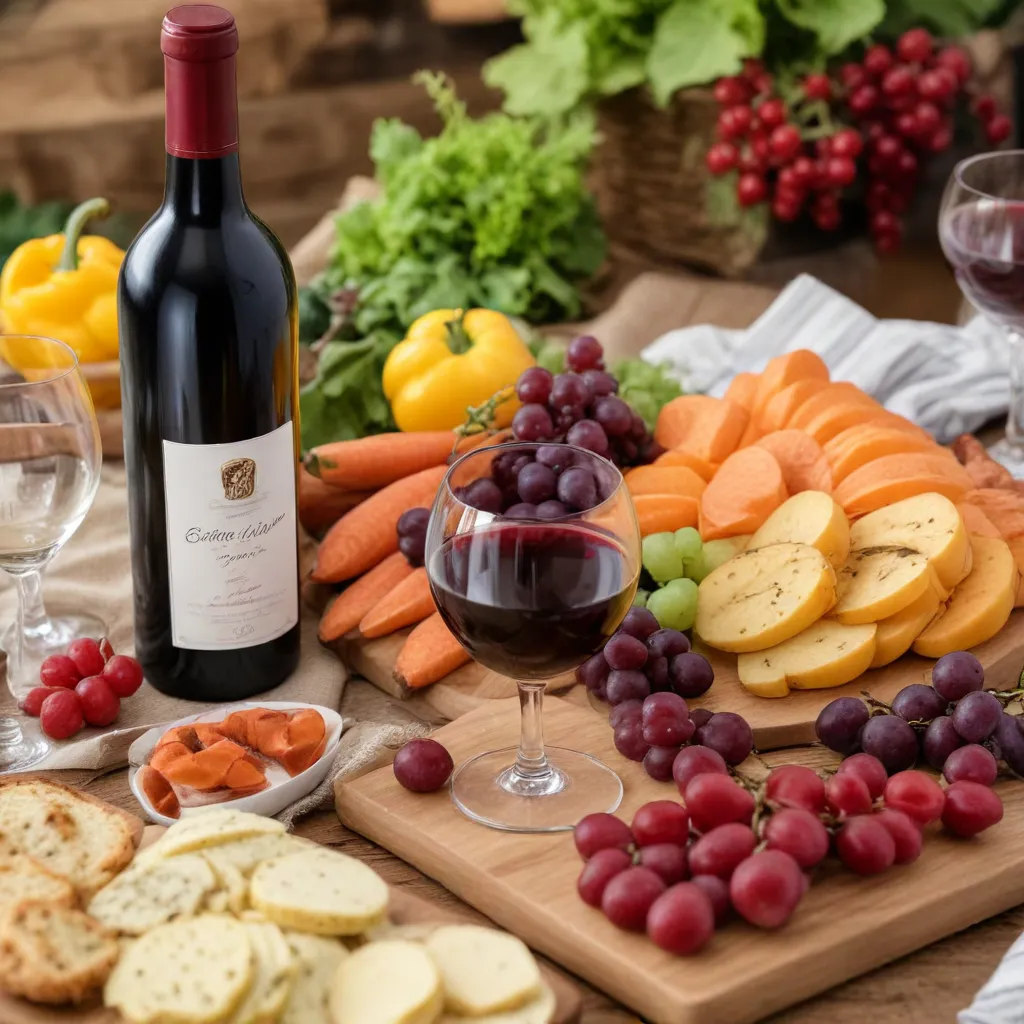
The dance between wine and cuisine is a symphony of flavors, a celebration of the diverse culinary heritage that spans the globe. At the heart of this intricate pairing lies the understanding of how to harmonize the unique characteristics of seasonal produce with the nuanced profiles of exceptional wines. Whether you’re a seasoned sommelier or a passionate home cook, mastering the art of pairing wines with the bounty of the seasons can elevate your dining experience to new heights.
Seasonal Produce: The Cornerstones of Culinary Delight
Fruits
Figs, with their earthy and subtly sweet notes, lend themselves beautifully to autumnal pairings, their robust flavors complementing the smoky char of grilled meats or the richness of a decadent dessert. Pears, with their delicate floral and honeyed tones, shine when paired with crisp white wines or delicate Rieslings, creating a harmonious balance of flavors.
Vegetables
The arrival of spring ushers in a vibrant array of seasonal vegetables, each with its own unique personality. Tender asparagus spears, with their verdant notes, find a perfect match in the bright acidity and citrus zest of a Sauvignon Blanc. Earthy mushrooms, on the other hand, thrive when paired with the earthy, forest-floor aromas of a Pinot Noir, the wine’s delicate tannins cutting through the dish’s umami-rich flavors.
Herbs
The fragrant and aromatic presence of herbs, from the peppery bite of arugula to the floral notes of lavender, can significantly influence the success of a wine pairing. A Chardonnay with its creamy, vanilla-tinged profile can seamlessly marry with the herbaceous notes of a pesto-dressed pasta, while a Syrah’s bold black pepper and smoke can elevate a hearty stew seasoned with fragrant rosemary.
Wines: Unlocking the Secrets of Harmonious Pairings
Red Wines
Full-bodied Cabernet Sauvignons, with their robust tannins and dark fruit flavors, excel when paired with grilled or roasted vegetables, their bold character standing up to the caramelized notes of the produce. Conversely, the delicate red berry aromas and silky mouthfeel of a Pinot Noir can beautifully complement the earthy sweetness of mushrooms or the vibrant acidity of tomatoes.
White Wines
The crisp acidity and vibrant citrus notes of a Sauvignon Blanc can breathe new life into a simple salad of fresh greens, while the rich, creamy texture of a Chardonnay can elevate the smoky char of grilled eggplant or zucchini. Aromatic white varieties, such as Viognier or Gewürztraminer, with their floral and spicy nuances, can tame the heat of a spicy vegetable curry or Moroccan tagine.
Rosé Wines
Rosé wines, with their delicate pink hues and refreshing profiles, offer a versatile option for pairing with a wide range of seasonal produce. The berry-forward flavors and zippy acidity of a Provençal-style Rosé can balance the sweetness of grilled stone fruits, while a drier, more mineral-driven Rosé can complement the herbaceous notes of a tomato-based gazpacho.
Pairing Principles: Balancing Flavors and Textures
Complementary Flavors
When pairing wines with seasonal produce, the principle of complementary flavors is key. A bold, fruit-forward Zinfandel, with its jammy notes and peppery spice, can beautifully accentuate the caramelized sweetness of roasted root vegetables, while a crisp, citrus-driven Albariño can refreshingly contrast the spicy kick of a chili-infused dish.
Balancing Acidity
Maintaining a balance of acidity is crucial when pairing wines with fresh, seasonal ingredients. The bright, mouth-watering acidity of a Riesling can cut through the richness of a creamy squash soup, while the zesty, mineral-driven profile of a Sauvignon Blanc can harmonize with the slightly bitter notes of sautéed greens.
Texture Considerations
The interplay of textures between wine and food is equally important. The velvety mouthfeel of a Merlot can enhance the heartiness of a roasted vegetable medley, while the delicate, silky texture of a Pinot Noir can complement the tender bite of a grilled portobello mushroom.
Seasonal Pairing Inspirations
Spring
As the earth awakens, embrace the vibrant flavors of spring with a crisp Sauvignon Blanc paired with a salad of fresh asparagus, snap peas, and a lemon vinaigrette. For a more indulgent pairing, a rich Chardonnay can elevate the smoky char of grilled zucchini and bell peppers.
Summer
Bask in the sun-drenched bounty of summer with a refreshing Rosé, its watermelon and strawberry notes harmonizing beautifully with a tomato bruschetta or grilled artichokes with lemon aioli. For heartier fare, a Pinot Noir’s delicate red berry and spice profile can elevate a vegetable risotto or pasta dish.
Autumn
Embrace the earthy, cozy flavors of autumn with a velvety Merlot complementing roasted root vegetables, such as carrots, parsnips, and beets. For a more robust pairing, a bold Cabernet Sauvignon can stand up to grilled vegetable kebabs or stuffed bell peppers.
Winter
As the chill of winter sets in, a full-bodied Syrah, with its dark fruit and smoky oak notes, can elevate a hearty ratatouille seasoned with fresh herbs. For a comforting finale, a Zinfandel’s fruit-forward approach can beautifully complement a vegetable-based stew or a grilled vegetable dish with a tangy barbecue sauce.
The art of pairing wines with seasonal produce is a journey of discovery, where each harmonious combination unlocks a new world of flavors and textures. By understanding the principles of complementary and contrasting flavors, as well as the importance of balancing acidity and texture, you can embark on your own culinary adventure, exploring the endless possibilities that arise when exceptional wines and the bounty of the seasons come together. So, raise a glass and savor the delightful dance of wine and produce, as you create unforgettable dining experiences that celebrate the rich tapestry of the world’s culinary heritage.
